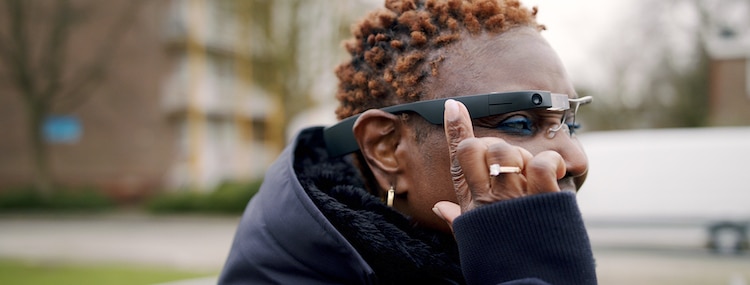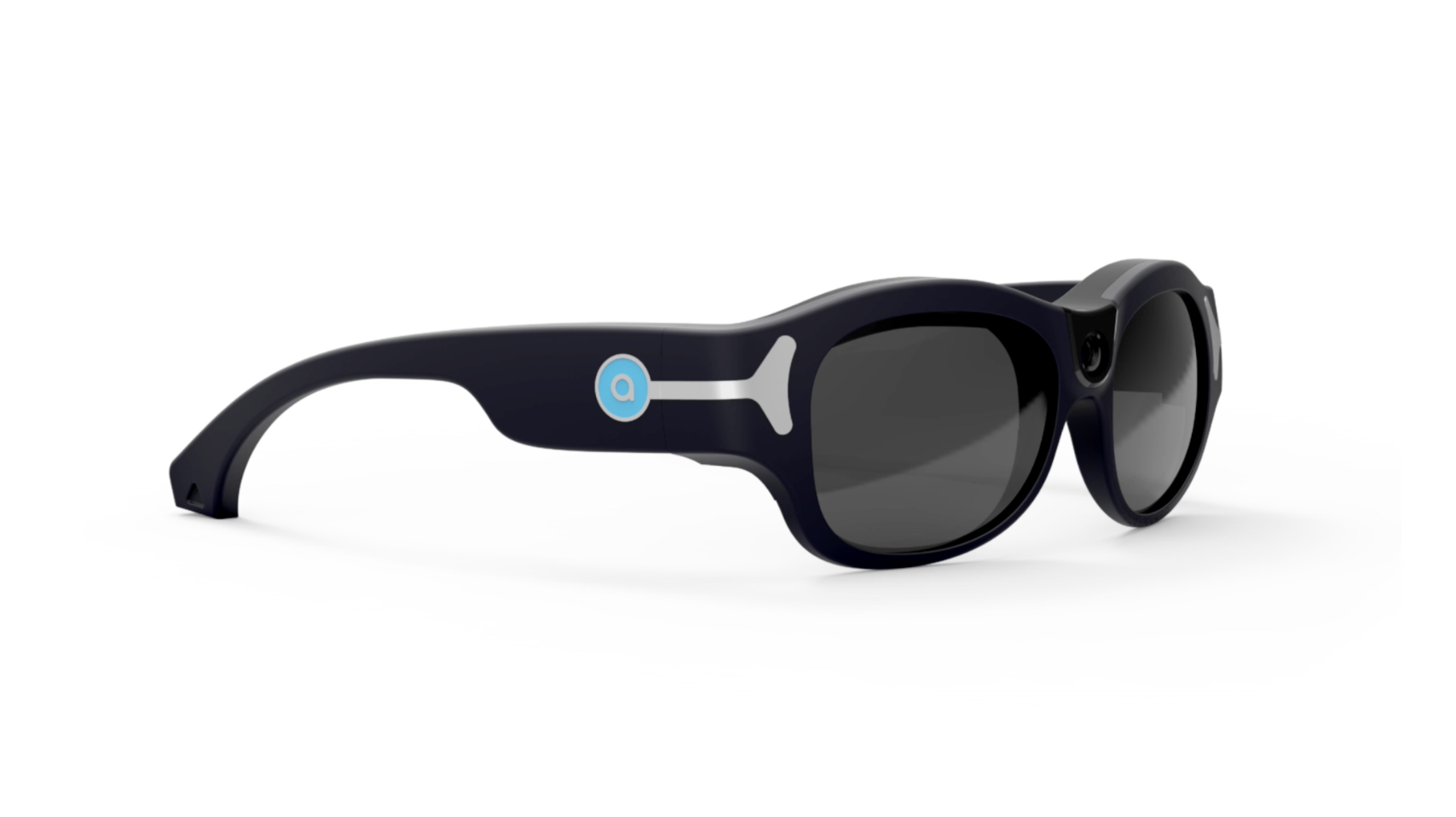Speech-to-Text Devices for Low Vision Users: Enhancing Communication and Productivity
Discover Advanced Assistive Gadgets for Individuals With Visual Impairments
The landscape of assistive innovation for individuals with aesthetic impairments is progressing swiftly, presenting an array of ingenious gadgets that boost autonomy and involvement (Braille displays and notetakers). From clever glasses that effortlessly merge aesthetic input with acoustic support to innovative navigating applications that redefine spatial recognition, these devices are improving possibilities. The most current advancements in Braille technology and voice-activated systems dramatically add to ease of access. However, the effects of these developments extend far beyond simple capability; they challenge traditional perceptions of disability and freedom. What might this indicate for the future of inclusion and support?
Smart Glasses Innovations
Smart glasses represent a significant advancement in assistive modern technology for individuals with aesthetic problems. These cutting-edge tools incorporate various attributes made to improve the user's interaction with their environment. Furnished with sensors and cameras, wise glasses can capture real-time visual info, which is after that processed and shared to the customer with audio comments or haptic experiences. This performance allows people to obtain instant summaries of their surroundings, improving their capacity to involve and browse with the globe.
Furthermore, innovations in fabricated knowledge have better enhanced the abilities of smart glasses. Artificial intelligence algorithms can identify faces, read text, and determine objects, making them invaluable devices for everyday jobs. Individuals can obtain acoustic hints that offer context regarding their setting, promoting self-reliance and self-confidence.
Additionally, the ergonomic layout and lightweight nature of many clever glasses make them ideal for extended usage, guaranteeing convenience while enhancing capability. As these gadgets proceed to progress, they hold the possible to revolutionize the means individuals with aesthetic impairments experience their day-to-days live, linking the space between availability and technology. The ongoing r & d in this area promise to increase the possibilities for clever glasses, making them a crucial part of modern-day assistive devices.
Navigation Application and Tools
Various navigating applications and devices have become important resources for individuals with aesthetic disabilities, substantially improving their ability to pass through strange settings. These technologies take advantage of GPS capability, audio signs, and real-time data to supply users with exact navigation aid.
One noticeable example is the Aira app, which links individuals to skilled representatives that can provide visual summaries of surroundings and navigating support through a live video feed. This service enhances the customer's spatial awareness and confidence while navigating. Another noteworthy tool is Seeing Eye GPS, which supplies voice-guided navigating and factors of passion, allowing customers to accessibility crucial info about their surroundings.

As technology continues to development, the advancement of more sophisticated navigating devices guarantees to additional empower people with aesthetic problems, promoting seamless flexibility and combination right into diverse atmospheres. Such innovations are critical in promoting a more comprehensive society.
Braille Innovation Developments
Over the last few years, improvements in Braille modern technology have dramatically changed just how people with visual problems access details and involve with the globe around them. The development of portable Braille screens has changed analysis by permitting individuals to link wirelessly to computers, smartphones, and tablet computers. These tools transform message into Braille in real-time, enabling smooth communication with electronic material.
Furthermore, innovative Braille printers have arised, improving the production of responsive products. Modern embossers are much faster and extra reliable, permitting the fast development of Braille files and educational materials. This efficiency reduces the moment and expense connected with generating Braille resources, making them much more easily accessible to institutions and organizations.
Additionally, the combination of Braille with other technologies, such as artificial knowledge and artificial intelligence, has actually opened brand-new opportunities for customized knowing experiences. Voice acknowledgment and synthesis innovations can match Braille, offering a comprehensive technique to info circulation.
As the need for inclusive education and learning and work environment atmospheres expands, these technological innovations play a crucial duty in empowering people with visual impairments, ensuring they have equivalent access to details and possibilities in different facets of life.
Wearable Tools for Independence
A growing array of wearable devices is boosting self-reliance for people with visual problems, offering innovative services that improve navigating and day-to-day living. Braille displays and notetakers. These devices use advanced innovations to offer real-time responses and support, advertising Check Out Your URL autonomy in various environments

Wearable modern technology also consists of smartwatches that can be programmed with access features, enabling customers to obtain notices, track their places, and even call for help with the touch of a switch. Furthermore, some gadgets include synthetic knowledge to contact lens test assess the setting, offering sound summaries of close-by things or people.
Voice-Activated Assistive Solutions
Leveraging voice-activated assistive services has changed the landscape of assistance for people with aesthetic impairments, offering hands-free interaction and access to a variety of tasks. These innovations use all-natural language handling and man-made knowledge to allow individuals to do everyday tasks through easy voice commands.

In addition, current developments in voice recognition precision have improved the customer experience dramatically, accommodating diverse accents and speech patterns. This inclusivity guarantees that more people can gain from these innovations, promoting a better feeling of freedom.
Final Thought
To conclude, the development of advanced assistive devices considerably improves the independence and top quality of life for people with aesthetic problems. Advancements such as smart glasses, navigating applications, Braille modern technology, wearable tools, and voice-activated solutions collectively promote a more comprehensive setting. These modern technologies empower users to browse their surroundings with confidence and engage even more completely with the world, eventually promoting greater access and level playing fields for individuals encountering visual challenges.
The landscape of assistive innovation for individuals with aesthetic impairments is progressing swiftly, presenting an array of ingenious devices that improve freedom and interaction.Smart glasses stand for a substantial improvement in assistive modern technology for individuals with aesthetic impairments. As these gadgets proceed to evolve, they hold the prospective to transform the method people with aesthetic problems experience their day-to-day lives, linking the void in between access and technology.In current years, advancements in Braille technology have actually significantly transformed how people with aesthetic problems access info and involve with the globe around them. These innovations equip users to navigate their environments with self-confidence and engage even more completely with the globe, ultimately advertising greater ease of access and equal chances for people facing visual obstacles.